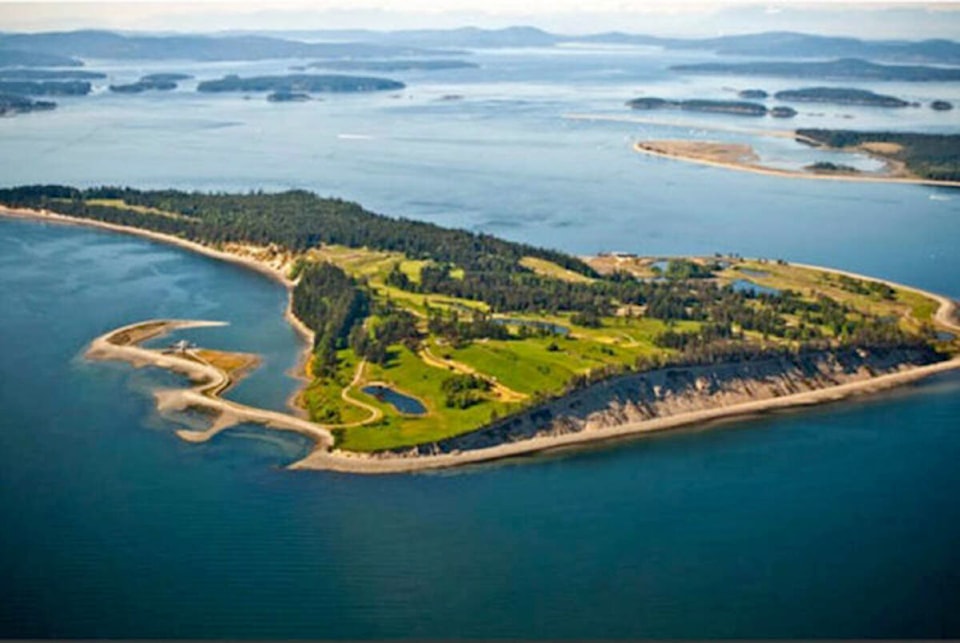Property assessments rose the most in the West Shore communities of Greater Victoria, but Oak Bay and Saanich Peninsula retain many of the most exclusive properties in the region - even the province - according to B.C. Assessment notices for 2023.
They reflect market values as of July 1, 2022 and clearly show rising property assessments on the West Shore, where Colwood ($1.02 million) and Highlands ($1.326 million) each recorded an increase of 16 per cent — four per cent above the overall increase of 12 per cent for the region as measured by BC Assessment. It includes the 13 municipalities of Greater Victoria plus the Gulf Islands. Langford ($992,000) recorded an increase of 15 per cent while View Royal ($1.132 million) recorded an increase of 14 per cent, tied with Central Saanich ($1.124 million), the only community outside the West Shore to rank among the five communities with the highest increases.
Metchosin ($1.278 million) and Sooke ($831,000) each recorded increases of 11 per cent to underscore the rise of the West Shore as Greater Victoria’s most dynamic region as measured by metrics such as property values and population growth.
Vancouver Island Deputy Assessor Jodie MacLennan said she could not specifically say why those communities have seen such increases.
“But I can say that we have seen tremendous growth in both of our single-family and our strata-residential property markets in those particular areas,” she said.
Core communities such Saanich ($1.187 million), Esquimalt ($1.03 million) and Victoria ($1.157 million) have either recorded on par or below regional increases with 12, 12 and nine per cent respectively. Oak Bay, meanwhile, recorded an increase of nine per cent, but retained its rank as the most exclusive municipality when measured by property assessments, at $1.658 million. Five of the top-20 properties on Vancouver Island are addresses in Oak Bay with the property at 3160 Humber Rd. as the fifth-highest property in all of Vancouver Island with a value of $16.82 million.
RELATED: Victoria analyst says new real estate cooling-off period tilts power towards buyers
North Saanich, meanwhile, ranks second in Greater Victoria with an average assessment of $1.439 million. Three of the top-20 properties on Vancouver Island have addresses in North Saanich with 1850 Lands End Rd. the sixth most valuable property on Vancouver Island with $15.4 million. Central Saanich, meanwhile, is home to two properties in the top 20.
As for Sidney, its average assessment is $976,000, third from the bottom, ahead of the Gulf Islands ($876,000) and Sooke ($831,000).
But the highest-assessed property on Vancouver Island lies just off it in view of Sidney, North Saanich and Central Saanich, namely James Island. The privately owned island has an assessed value of $61.23 million. Only two other properties in all of British Columbia are worth more. James Island also points to the prolific place of smaller islands on the list of the highest assessed properties for the Vancouver Island region with seven making the top 20.
Naturally, not everybody can afford an island, but everybody must pay taxes and MacLennan has this important message for taxpayers.
Higher property assessments do not automatically translate into higher property taxes, she said.
“How your assessment changes relative to the average in your community is what may affect property taxes,” she said.
If owners see their property values change similar to the average change for that class, taxes will likely not change. If the change is above the average, taxes will likely increase, while they will likely decrease if the change is below the average. It also depends on the financial needs of municipalities, she added.
She also cautioned against confusing property assessments based on July 2022 figures with future real estate price points.
“(The) 2023 assessments are based on a July 1, 2022 market value, meaning that when similar properties are sold up to around July 1, those sales are used to calculate property assessment values,” she said. “So since July 1, we (BC Assessment) are aware that the real estate market has changed and interest rates continue to rise and sales volume has declined since then. So as a result the 2023 property assessments are likely to be higher than what the current market value may be. But that will not be the same for everyone in British Columbia.”
Vancouver Island’s total assessments increased from about $342 billion in 2022 to almost $386 billion this year. About $4.78 billion of the region’s updated assessments is from new construction, subdivisions and the rezoning of properties.
Do you have a story tip? Email: newsroom@peninsulanewsreview.com.
Follow us on Twitter and Instagram, and like us on Facebook.
